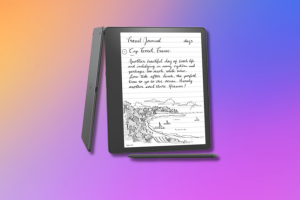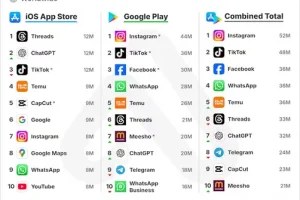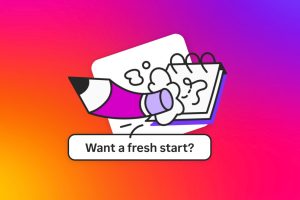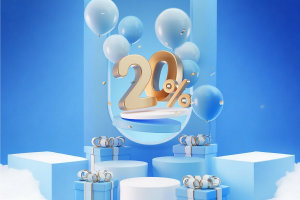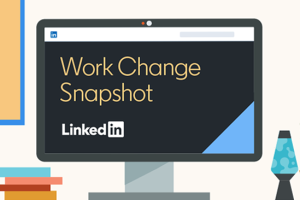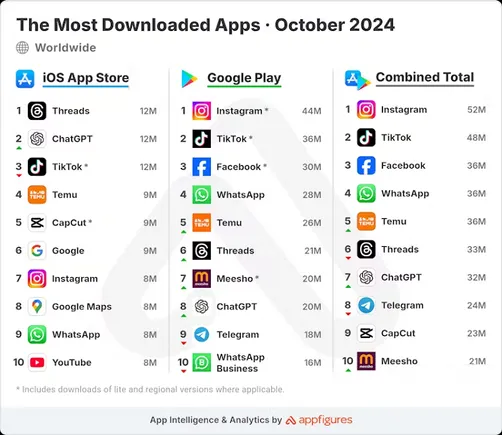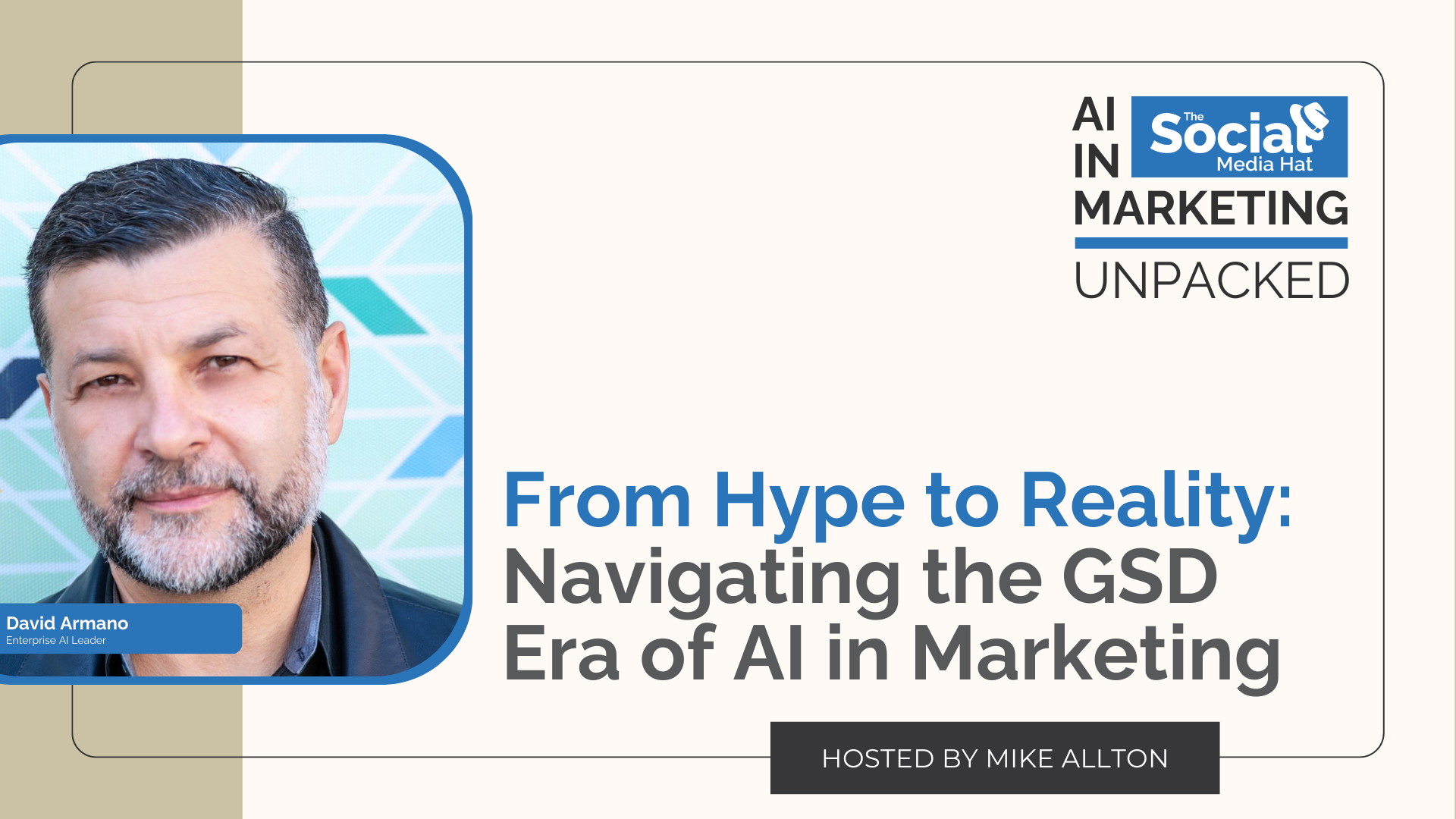You have a new partner! That’s awesome!
What’s next?
How do we make sure that the partnership and the relationship continues forward in a positive, constructive way? How do we set this partner up for success and, at the same time, make sure that our time is spent as efficiently as possible so that we can bring on more and more partners and drive more revenue?
That’s what we’re covering in today’s episode of Partnership Unpacked.
Welcome back to Partnership Unpacked, where I selfishly use this time to pick the brains of experts at strategic partnerships, channel programs, affiliates, influencer marketing, and relationship building… oh, and you get to learn too! Subscribe to learn how you can amplify your growth strategy – with a solid takeaway every episode from partnership experts in the industry.
And today is going to be fun because we’re talking about a topic that’s of keen interest to me personally – how to scale a robust partner program and create a predictable revenue engine driven by partners.
Maybe that sounds good to you but maybe, like me, you’ve struggled to build a sustainable program. Maybe you’ve had a few too many instances where you brought on a new partner but nothing ever materialized. Or maybe you know that many of your prospects are already working with your partners, but you haven’t been able to successfully bring them into your sales process yet.
That’s what our guest today, Rob Rebholz, is here to help us with.
He has founded a SaaS company, Superglue, that’s devoted to helping CMOs and partnership leaders scale their partner-led revenue but, before that, Rob was in the trenches building another SaaS business where he learned the in’s and out’s of strategic partnerships. At that business, over 70% of the revenue was partner-driven!
Partnership Unpacked host Mike Allton talked Rob about:
♉️ How to properly onboard partners
♉️ The challenges CMOs and partnership leaders face trying to co-sell
♉️ What opportunities AI and automation bring to scale
Learn more about Rob Rebholz
Resources & Brands mentioned in this episode
Full Notes & Transcript:
(Lightly edited)
How CMOs and Partnership Leaders Can Scale Partner Onboarding and Co-Selling with Rob Rebholz
[00:00:00] Mike Allton: You have a new partner. That’s awesome. What’s next? How do we make sure that the partnership and the relationship continues forward in a positive, constructive way? How do we set this partner up for success and at the same time make sure that our time is spent as efficiently as possible so we can bring on more partners and more partners and drive more revenue?
That’s what we’re covering in today’s episode of Partnership Unpacked.
This is Partnership unpacked your Go-to Guide to Growing Your Business through partnerships quickly. I’m your host, Mike Alton, and each episode unpacks the winning strategies and latest trends from influencer marketing to brand partnerships and ideas that you can apply to your own business to grow.
Exponentially. And now the rest of today’s episode, welcome back to Partnership Unpacked, where I selfishly use this time, every time to pick the brains of experts at strategic partnerships, channel programs, affiliates, influencer marketing, and relationship building. Oh, and you get to learn, too. Subscribe to learn how you can amplify your growth strategy with a solid takeaway.
Every episode from partnership experts in the industry. And today’s gonna be fun because we’re talking about a topic that’s of keen interest to me personally, how to scale a robust partner program and create a predictable revenue engine driven by partners. Maybe that sounds good to you, but maybe like me, you’ve struggled to build a sustainable program.
Maybe you’ve had a few too many instances where you brought on a new partner, but nothing ever materialized. Or maybe you know that many of your prospects are already working with your partners, but you haven’t been able to successfully bring them into your sales process yet. That’s what our guest today, Rob ltz, is go here to talk to us about.
He’s founded a SaaS company Super Glue that’s devoted to helping CMOs and partnership leaders. Scale, their partner led revenue. But before that, Rob was in the trenches building another SaaS business where he learned the ins and outs of strategic partnerships at that business, over 70% of the revenue was partner driven.
Hey Rob, welcome to the show.
[00:02:19] Rob Rebholz: Thank you so much for having me. Love the intro. Awesome. [00:02:22] Mike Allton: Well, how did you get started in this partnership industry? And of course, tell us about the project you’re working on now and how that helps partners. [00:02:30] Rob Rebholz: Yeah. You know, I never thought about getting into partnerships. So I built a company, the MarTech space, and we had customers ask us about integrations and then, you know, we just.
Kind of figured that this stuff makes sense. We started building integrations, then started to kind of organically talk to these companies that we integrated into, or whose tools we integrated into. And just, you know, at one point in time realized that that helps us drive significantly more revenue.
Started leaning in. I made every mistake in the book over the next few years as I’ve built a partner ecosystem for that company. But yeah, ultimately, you know, now we drive 70% of revenue through partners. It’s an eight figure revenue business. And that led me to starting supergroup. I faced a lot of challenges and kind of scaling that ecosystem, kind of trying to figure out like who I need to engage with.
How, and, you know, we, everybody I talk to facing similar challenges, right? Every partnership team you talk to is, is hopelessly overloaded, you know, their peers, all of these amazing tools. There’s marketing automation, sales people have sales engagement tools. And you know, as partnership people were kind of left by ourselves and it just, You know, with like spreadsheets and Salesforce, et cetera.
And that’s why we built Super Glue, which is basically an AI system for partnership teams. So Super Glue is a tool that basically alerts partnership teams or partner managers who to engage with when and how. So it’s really straightforward. Alright,
[00:03:53] Mike Allton: I love the sound of that. And it’s, 2023. So you said the magic word.
Ai. So ai. Yeah. AI in the tool. Ai. Ai. It’s there. Just run to it. Buy it. It’s got ai, so it’s, it’s gotta be great, right?
[00:04:05] Rob Rebholz: Yeah. Yeah. [00:04:07] Mike Allton: So let’s talk about partner onboarding, because as you know, this is a really critical step that all too often is overlooked. Mm-hmm. Start by saying why you think that is, and then what are the most important aspects of partner onboarding that new partners and businesses aren’t doing today? [00:04:23] Rob Rebholz: Yeah, I think it’s a really good topic. So the funny thing is when we started Super Glue and we started thinking about use cases, we didn’t really think that much about partner onboarding. Partner Onboarding was always a bit of a side topic, and the more we work with companies, the more we realized that partner onboarding enablement are.
Probably that, that is one of the biggest challenges, one of the biggest pain points and one of the biggest kind of hurdles to scaling your ecosystem. What we’ve seen a lot is that, you know, people, they recruit partners. They just kind of, they, they fill more partners into that leaky bucket and because they don’t have a proper partner onboarding processes, A lot of partners are never activated, never drive revenue, and that obviously has very significant long-term kind of downsides.
So yeah, we spent a lot of time over the last year kind of figuring out what the proper partner onboarding process should look like. I personally think that a lot of partner onboarding processes are too reactive, right? Like you basically have a partner, you have a call with them, you send ’em a lot of information, give ’em access to a prm, and you expect them to do everything by themselves and just.
Raise their hand whenever they’re lost. And you know what I think is a lot, works a lot better if you’re a lot more proactive. That’s what we’ve seen, right? You basically proactively guide and push a partner through that partner onboarding process, which has like two benefits. First one. Obviously you get them to value faster or you activate them faster, you get ’em to the point where they drive revenue faster.
But the other thing is you kind of, you benefit from that initial momentum, the excitement. I like, that’s why we see a lot PE a partner, you know, gets on the first call, they’re excited, they want to do stuff, and you can kind of, you can leverage that to really gain speed. And if you don’t, if you just like you have that momentum, you just, you know, send them all their stuff, they forget about you and you know, you basically, You’re lost, you start from scratch, you gotta reactivate them and it’s that just that doesn’t work.
[00:06:13] Mike Allton: Now is this mostly just for affiliates or is this any kind of partnership? Are there specific kinds of partnerships that maybe this helps more than others? [00:06:21] Rob Rebholz: Yeah, so we are very focused on referral partners, so tech as well as agency partnerships. I think the same problem exists when it comes to affiliate partners, but when you look at affiliate partners, if you look at huge affiliate programs, to be quite frank, that’s almost like a marketing automation play, right?
If I have thousands of partners and I need to engage in, that’s, that’s kind of like I have great marketing automation tools for those. We’re more focused on like super glue on the, you know, referral partnerships, bigger deals where there’s more of a relationship sides to the partnership. Got it. And by the way, that’s one of the things that I think people underestimate kind of the importance of relationships.
Like that’s also what we, what I learned in my previous role where you, we had this great relationship with Salesforce partnership team loved us, but that never got us into deals. Only when we started to truly like build really relationships with their AEs, et cetera, build trust with them, get them excited.
That’s when. You know, they started to really generate revenue for us because the panel managers don’t bring you into deals. They bring you into meeting here and there. They share information, et cetera. But ultimately, the AEs, the CSMs on your partner’s side own the deals, and if they trust you, they don’t care about the agreements in the background.
They trust you. If they feel that you add value for them and for their customers, they’re one to bring you into deals.
[00:07:38] Mike Allton: Love it. So we’re talking about building relationships with these potential partners. We’re talking about treating them as revenue partners, not just affiliates. Mm-hmm. That are kind of, you know, faceless, you know?
Mm-hmm. Among a mass of numbers. Right. So if we wanna ramp that up, how do we automate and scale partner onboarding that achieves that kind of results?
[00:07:58] Rob Rebholz: Yeah, so this is an interesting question. You know, when I initially, when we started talking to partnership teams kind of reminded me of what, how sales teams felt about sales enablement tools like 10 years ago when like outreach, SalesLoft, et cetera started to become popular.
And like salespeople back then are like, Hey, you can’t automate. Sales process, you can’t automate interactions, et cetera. And then over time they realize, hey, there are a lot of recurring activities that can actually be automated if you do it in a meaningful way. The same is true like for partnership teams.
Like when you look at what a partner manager does every day, 30 to 60% of the stuff that they waste their time on, it’s, it’s just. And it’s not a waste of time, but it kind of is because it’s repetitive stuff, right? It’s like checking in with somebody, sharing some information to enable somebody, you know, just like all of these touch points that are very recurring, right?
Like E number 72 is not going to, you know, you’re not gonna have to engage with them differently. You probably have some type of blueprint, or if you don’t, there are best practices. That you can use to automate, I think you should automate the recurring interactions, right? Like the stuff that, the touch points everybody goes through.
So I think partner managers should be able to spend a lot more time on, you know, like strategic projects, helping, working with a partner to win like a really big deal, helping them co-sell, making intros, like all the stuff where. You would need one-to-one interactions that are non-repetitive or it’s more of like a project management kind of requirement versus just standard interactions that waste your time.
[00:09:28] Mike Allton: So when we’re talking about partner enablement mm-hmm. I mean, that’s just giving them a Google Drive folder for assets, right? I mean, what, what’s the challenge there? [00:09:37] Rob Rebholz: Exactly. Or just a, a nice one pager. What else do they need? Right, exactly. That’s good. Yeah, it’s interesting. I think that, and that’s, Quite frankly, that’s very often how this works, right?
Like you have these lunch and learn sessions, right? Like you present what your company does to like 10 15 AEs. You yeah, give them access to a uh, G drive. You send them a very long email with a bunch of links, and then you forget about them. And Javier down the road, you wonder why they’re not driving value.
And I think that’s a problem, right? Like what you need to do is you have that, you have that interaction, you share some information with them, and you nurture them. You stay in touch with them. You create touchpoints that feel meaningful to them. It’s like loyalty program in crm, right? Like you create meaningful touchpoints where they, you stay top of mind, you keep them excited, you make sure that they understand what you do because.
After that lunch learned, they’ve already forgotten about you. So it’s step by step. Turn them from somebody’s heard from you to somebody who likes you, who trusts you, and then they bring you to deals, right? Like, and then this stuff starts happening, and obviously you win the first deal with them. They’re gonna talk about you and you know, all this good stuff starts happening.
But it’s really, it’s relationship, right? It’s, uh, we always talk about these relationships, but then we don’t build them. We don’t, we send them to our prm. We’re like, Hey, educate yourself. Do this training. This is like, take care of yourself. You know, rather than like creating a bit more of engagement approach where we are proactive and where we meet them, where they already live, right?
Like in their, you know, in China City, they’re already working. By the way, this doesn’t mean that I don’t think PRMs aren’t important. Most of our customers have PRMs and part of the challenge and part of the thing that we help them do is like we create touch points. And some of these touch points basically include a prompt that we tell them, Hey, now you should go to the prm.
Now the PRM is gonna add value or this and that way. And that really drives, uh, portal adoption.
[00:11:26] Mike Allton: I love that you stress the fact that, first of all, it’s a relationship, and I’m gonna put a bunch of links in the show notes cuz we’ve talked about relationships so much as the focus of entire episodes cuz they’re so important.
I couldn’t agree more. And I love that you pointed out that because it’s a relationship, it needs to be nurtured over time. And I’m guilty of this like anybody else. I mean that long ass email with everything that I need you to know in one message when. At a minimum, I could break that up into six emails.
Yeah. And then weave in, like you said, you know, some touch points, some ways to actually build relationship. Love what you’re talking about. That makes so much sense. So we’re talking with Rob about how to build up your partner program, how to use that channel for success. I wanna share with you real quick a message from our CMO at Agorapulse about another channel that you might be overlooking.
It’s the Arc de Triumph. Can you imagine if you’re in charge, if you’re the cmo? Of marketing Paris, what are your main channels? Wow, there’s. The arc of Triumph. There’s the Eiffel Tower, there’s the Louv. Those are your channels you’re gonna use to drive tourism dollars in. Okay, now, but you’re not the CMO of Paris.
In fact, you’re the CMO of your company product service. So what are your main channels? So I’m gonna guess they’re things like pay per click, maybe trade shows, events, maybe content. Those are all pretty predictable, right? Let me ask you this question. Are you treating social media as a main channel? By the way, only 1.8% of you today measure social media and can prove an ROI in that investment.
HubSpot and Gartner say social media is the number one channel to invest in this year. Are you doing it? If not, I can tell you why you’re not doing it. Because you don’t have the tools, you don’t have the mentality, and that’s okay. We’ve got you covered. You changed the mentality. We’ll give you the tool, Agorapulse tracks all the ROI for you.
One place to manage all your social media activity, your number one channel, change your success. Treat social media as a Channel one CMO to another. My name is Darryl. I’m with Agorapulse. I’ll talk to you soon.
All right. That’s a great segue cuz the rest of this episode we’re gonna be talking about driving dollars, driving actual revenue, right? So when it comes to partners, let’s talk co-selling, you know, and so for context, how has that worked with your businesses and your partners in the past?
[00:13:50] Rob Rebholz: Yeah, I mean, biggest, biggest drive on my previous company, we basically every.
Big deal that we ever closed, was it cosal? We systematically brought partners and or were brought in by partners into every major deal. It was just huge for us. So it’s, you know, a small company, 50 employees at the time, and close relationships with, like I said, Salesforce and all of their competitors as well.
And if these guys brought you into deals, we don’t need to talk about the impact of Right. Co-selling. Cause I think all partnership. People are aware of that, but it’s just mind blowing to me. You know, twice close rates, twice as big deal size as almost twice as big as our regular deals. So it’s just mind blowing.
And that was the reason why we leaned into partnerships so heavily. And the interesting thing was, I mean, so we just, like in the clip we talked, just talked about, you know, measuring our I, et cetera was interesting to me was the more I kind of started to analyze and a lot of that stuff was very manual about the more I started to analyze kind of.
What partner deals, kinda how partner deals are different from regular deals. The more you know, the more I like realized the impact. It wasn’t just, you know, deal velocity, deal size, uh, close rates, but it was also stuff like churn was a lot lower, right? Like lots of downstream effects even after you under deals.
So that was just, Yeah, it still is mind blowing, kind of how powerful this stuff can be.
[00:15:11] Mike Allton: No, that’s crazy cuz in full transparency, that’s something that we aren’t really doing today. Yeah. At Agora Pulse, and that’s one of the reasons why I ask the questions and have people like you on the show because that’s an area we’re trying to explore that I’m trying to build up from scratch that ecosystem where we can do co-selling with partners. [00:15:28] Rob Rebholz: Yeah, it’s huge. It’s just, to me it was, I always knew there was a lot of. Kind of, there are a lot of benefits to it, but the more I started to kind of figure out like any K P I that I looked at, I was like, wow, partners have an impact on that stuff was really interesting. And I mean, it’s obviously what we see in the companies we work with. [00:15:46] Mike Allton: Awesome. So now how can automation and ai, here’s that, that word again, right, can actually be used to help and grow and scale this kind of partner driven revenue. [00:15:55] Rob Rebholz: Yeah, I think it’s just, you know, like we talked about this in the beginning. Partner teams are overwhelmed. So automation and I, I think, like from my point of view, I think, I don’t think you can fully automate these interactions and some bot can take over.
I think that’s not how this works. It’s, it’s a relationship driven business. But I think what automation and I can do is help you with two things. First, kind of help you prioritize, basically tell you what you should be doing, right? The stuff that you normally overlook, right? Like, hey, this person, you know, hasn’t interacted with us in a while.
They used to be an important partner. This person is new. We need to like enable them. There’s a co-selling opportunity with this person. Let’s keep them what they source the deal. Let’s keep them posted on where we stand with that deal. So it’s really like a tool can help you do that, right? Can. Tell you who you need to interact with versus you looking at some reports or probably just doing this based on your kind of own perception, step one.
Step two is it can help you kind of take action, right? Based tell you, hey, this is okay, you need to engage this person. Cuz we just had a, you know, an overlap and cross beam or reveal and you know, it can provide you an email. The email that you should send, and this is where I AI comes in. AI can draft a joint value proposition for you.
At least that’s what we do, right? That’s, that’s one of the functions we offer. So you don’t just, you know, send a standard email, somebody like, Hey, so you have this customer, can you introduce us? But what we can do is like, So you have this customer, here is why we should work on this together. Which obviously drives, it, drives performance because it basically, it, it signals to the other person A it.
It helps them understand the value and it signals that you really care about this. I should assist you in this. I’m not saying AI’s gonna do everything, but it can pre-draft that messaging so that you as a partner manager just need to kind of give it a final touch and just send that stuff out and. Kind of initiate the process.
[00:17:41] Mike Allton: Love it. So a couple things. You mentioned Crossbeam and Reveal. For those who aren’t sure, these are tools that allow you to connect your CRM and compare them to your partner’s CRM since you, where you have overlap in terms of customers overlap in terms of opportunities. We did an entire episode with Jared Fuller from Reveal All about that.
I’ll into leave it. Yeah, Jared’s fantastic. I love Reveal, and I use Cross Beam too. Not everybody uses both, but I’d like to dig into this a little bit more because it used to be I could have a CRM and I could simply say, Hey, you know what? I want a reminder in 30 days to follow up with my contacts. Yeah.
And so it’s very manual, right? I’m telling the CRM we, and I want a reminder, and then it’s just gonna send me that reminder. As a popup or an email, whatever, without any kind of context. It’s just based on a simple date. How is that different from what you’re doing today? How is the AI actually helping?
[00:18:31] Rob Rebholz: Yeah, so these remind us. Yeah. Very often you need to set them up yourself, right? You set them up yourself, and it’s just like, Task, it doesn’t even pop up. It’s somewhere in Salesforce and you kind of ignore, at least me here, my sales, I, I think I’m like 2000 tasks. I have like zero inbox, but like 2000. So you have like all of these tasks somewhere in Salesforce and you kind of ignore them.
There’s no context and you know, you see the task and then you need to like, okay, you can read through the previous conversations, et cetera that you had with that person. Okay, remember? And then you go onto, Gmail and you draft an email, or maybe you even have a tool where you have templates. So the difference is, in our case, we.
We alert you proactively in in Slack, and we link it, right? We provide you the relevant information. I be like, Hey, this is what you need to do. Here’s the information about this partner that you need, who they are, what type of interaction should happen, et cetera, et cetera. And we provide you the email.
You just like literally click approve in Slack. I don’t even leave Slack, so. It’s, you know, on one hand it’s, you might be like, it’s not that much different, but reality is what I just described. Like if you do it with a, again, like super glue, you can kind of take a couple of other tools and connect them and try to build or build something similar in that case takes you like three clicks and you know, just.
You’re ready and done. If I work with the tasks and I create the tasks, et cetera, and by the way, every partner manager creates their own tasks. So everybody has a different approach. It’s inconsistent that just, you know, it takes, what, 10 minutes, 15 minutes, or probably I’m not gonna do it. At least if you deal with tasks like me, right?
I, I keep the 2000 tasks and every three weeks I go through ’em and just like move them forward. Because it’s just, I don’t have the time. Like that’s the thing, like I don’t have the time for all of these standard interactions. I’m like, this is a junior AE in, you know, in a partner organization. I don’t have the time to interact with them.
I’m too busy. But the truth is like that junior AE might come across big opportunity next week if you stay in touch with them. They’re gonna think about you. They might bring you in. So automation helps you kind of really expand your reach, engage you know, 10 times as many people in a meaningful manner.
That’s important thing. Don’t wanna bombard these people with trash.
[00:20:41] Mike Allton: I’m laughing because Slack integrated this new feature called later and it’s basically a bucket for any messages that you said, I wanna get back to this later. Yeah. And you set it up a specific time. Right. And now I’ve got, like you said, I’ve got this bucket of messages that I keep punting to the next week and the next week, the next week.
And I’m like, okay, this is not helping me. This is just adding to my to-do list to my society. But earlier you talked about how when you get a notification mm-hmm. Via super glue, that there’s something you need to do. Like, send an email. It can help you create that email. So is this generative AI that we’re talking about now?
[00:21:15] Rob Rebholz: Yeah, yeah, exactly. Exactly. Okay. You can, you have the option, you can work with templates, which makes sense in lots of cases. Right? If I have a, a standard partner onboarding form, I’m like, this is how you connect to, you know, do this and that. It’s just, I don’t need. Gen ai, but then there are other use cases where Gen AI’s awesome.
Where you can basically, you can even combine the two in super glue. You can have like prompts as part of messages where like, Hey, we have all this information about these partners. Right? Not in Salesforce. Obviously we have their job title, we obviously have the company, but we have stuff like last interactions.
We have overlaps with a cross beam and we can use that and really draft something. It’s mind blowing if you do it right. My problem with Gen AI and you know, chat bt, et cetera, is. I use it every day, but I use it manually, right? Like I go in, I’m like, I have a blog post, and I let it kind of review that stuff.
Or obviously since I don’t speak proper English, I need to review my LinkedIn posts. You know, judging is really powerful and makes me. 5% more productive. But because I always do this stuff manually, I go on the, in the interface and I prompt the tool. It’s like, I can’t, I don’t leverage at scale. So what we kind of, our idea was like, why don’t we bring the prompts into the automations, right?
Like, and basically every time, right? Like I’m as a partner, alerted I need to do something and I need to engage with somebody. Gen AI uses the, the data. Points we have for that person and create something that is more meaningful than just a standard template.
[00:22:44] Mike Allton: Love it. That’s fantastic. And this is such a great example that I’m reading every single day of ways that AI is being melded, just purely in the marketing industry.
Cause I don’t have time to look at other industries, but just in the marketing industry alone, we have so much that’s being woven and built and created. Mm-hmm. Using AI that, like you said, is helping us save at least five, 10%, sometimes even more amounts of our day. It’s fascinating.
[00:23:09] Rob Rebholz: I think what’s interesting is with these tools is so everybody’s integrating these tools right now.
I think as a user, as a, you know, user of these tools, it’s really important to look into kind of what companies are doing with these tools. Everybody just, it’s, it’s just like a stamp of approval, like Oh yeah, ai. And I think there are companies that do really good job with. That truly makes their product more powerful.
And then there are other companies that just integrated. It’s just kind of a fun little feature that you’re gonna use once a month. I have to admit, we were very, very fortunate that kind of the way we built the platform was like perfectly suited for AI with a couple of like ideas, you know, when we started building, building super, but we were also fortunate.
It just everything kind of. Fit in isd. So I think it’s very important to, AI isn’t everything like, yeah, there are lots of mediocre kind of use cases and applications of AI where it’s like, yeah, this is AI assisted, but it doesn’t really add more value. The AI doesn’t really change the game for you.
[00:24:07] Mike Allton: Totally agree. Totally agree. So my last question, Rob, this is my favorite question. I love asking everybody. How have relationships helped you throughout your professional career? [00:24:17] Rob Rebholz: Relationships are everything. I mean, I personally, I think everybody that’s invested in me in like companies I built at Super Glue, that was all relationship driven.
Like people knew me, people knew somebody that I knew. Our initial customers at Super Glue, our be our customers. The people truly believed what we did from day one. It was very relationship driven cause there wasn’t much we could offer right. So, and even now, like the vast majority of leads we get are relationship driven by partners, by people that like us, like what we do that, you know, have heard of us, et cetera.
So I think relationships are essential to everything you do in, in business that can’t be stressed enough. Yeah. Whatever I do, right? Not just in partnerships, I always tell. You know, when I talk to people that are starting out their career, I’m like, you need to find a mentor. You need to like start building relationships with people that are step ahead of you, et cetera.
Like that stuff is so important. And yeah, I think all of us could do more, you know, could build more relationships, be better at managing our networks. At least I could, to be quite frank. I’d say it a lot.
[00:25:18] Mike Allton: Yeah. I love it. And I love how every time I ask that question, everyone always says relationships are everything or some of that.
Yeah. And then go on to tell me why, without even being prompted. I love it. And you even threw some tips in there, like grab a mentor. Amazing. Thank you so much, Rob. This has been a fantastic interview. There’s been so much interested there. I know folks are gonna wanna run and try out super glue, but for every other question that they’ve got, if they want to, you know, reach out to you personally, how can they get ahold of you?
[00:25:44] Rob Rebholz: LinkedIn, or they can just. Send me an email, Rob reports super glue io. [00:25:50] Mike Allton: Fantastic. And like I said, we’ll have the links to Rob and Super Glue and all the other past shows that we mentioned in that conversation in the show notes. And that’s all we’ve got for today friends. But we’ll be back and make sure you’re following us on Apple Podcast and please leave us a review.
We’d love to know what you think. Until next time, thank you for listening to another episode of Partnership Unpacked. Hosted by Mike Alton, empowered by Agora Pulse, the number one rated social media management solution, which you can learn more about@agorapulse.com. If you enjoyed this episode, please subscribe on your favorite podcast player.
Be sure to believe us a review. Your feedback is important to us. And if you wanna be a part of our audience during live broadcasts, take a look at our calendar@agorapulse.com
slash calendar. Until next time.

